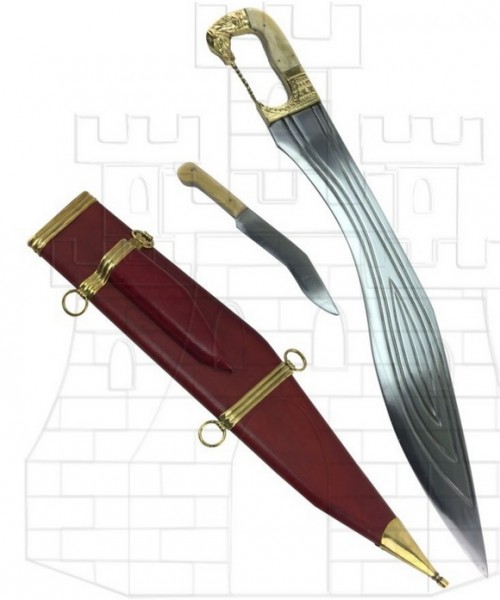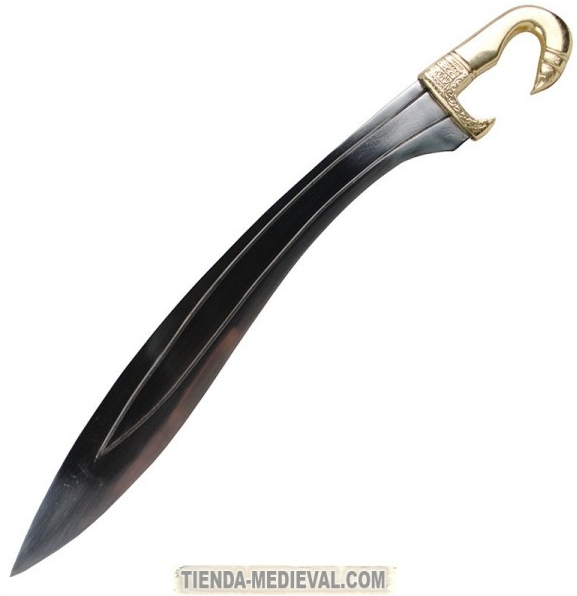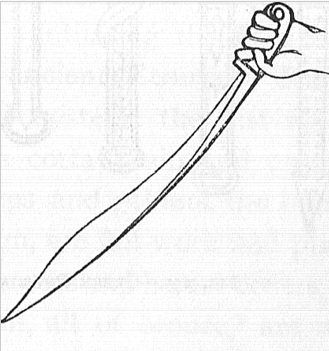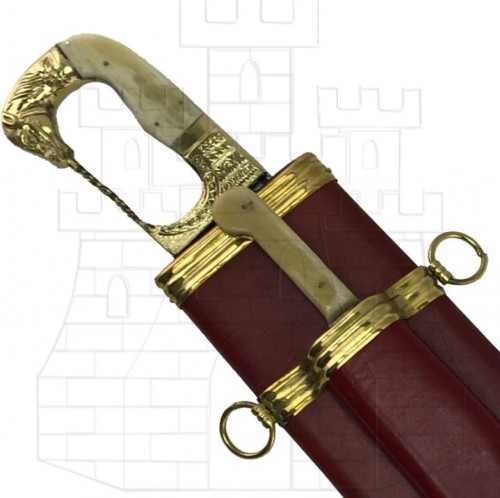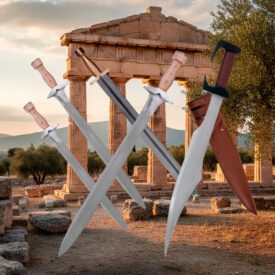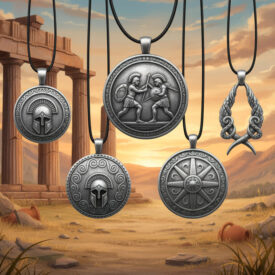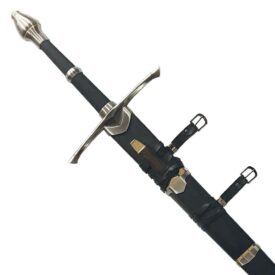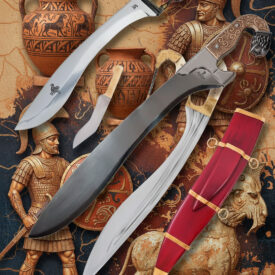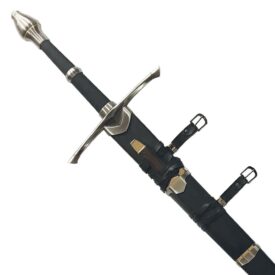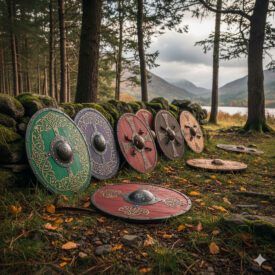Legend has it that in the heat of battle, when the clash of shields and spears made the earth tremble, there was a curved blade that cut through the air like the scythe of destiny: the kopis. This single-edged, forward-curving sword is not just a piece of metal; it is the synthesis of ergonomics, tactics, and military aesthetics of classical Greece. In this article, you will discover its origin, its presence in great campaigns, its technical design, its comparison with other contemporary weapons, and how it has reached our hands in the form of artisan replicas.
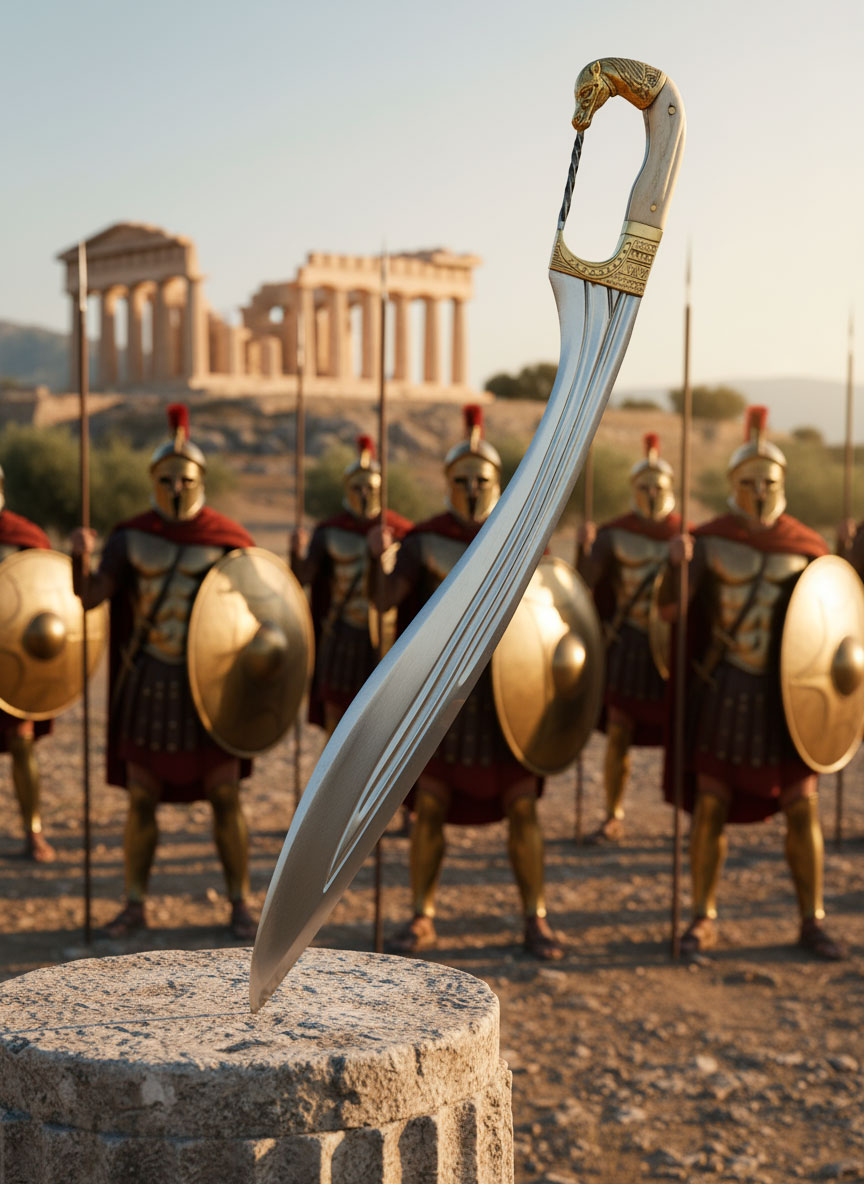
What you will learn: the etymological roots of the kopis, its chronological evolution, the reasons why horsemen and soldiers chose it, its differences from the falcata and the xiphos, how replicas were forged and how they are forged today, plus a comparative table to easily see its characteristics.
Kronos of iron: chronology of the Kopis
After understanding its nature, it is convenient to place it in time. The history of the kopis unfolds over centuries, battles, and cultural contacts. Below is a clear chronology to understand its historical trajectory and its subsequent influence.
- 7th – 5th centuries BC: Early appearances in Etruria and adoption in Greece towards the end of the 6th century BC.
- 5th – 4th centuries BC: Hellenistic heyday. The kopis became popular among infantry and, above all, cavalry; Philip II and Alexander the Great incorporated it into elite units.
- Hellenistic Period: Standardized use in mounted formations and the appearance of regional and shortened variants.
- Middle Ages and beyond: Morphological influence on sabers, yatagans, and falchions; possible evolution towards Seaxe and other single-edged blades.
- 19th – 21st centuries: Archaeological interest and forging of modern replicas; the kopis becomes a reference for historical reconstructions.
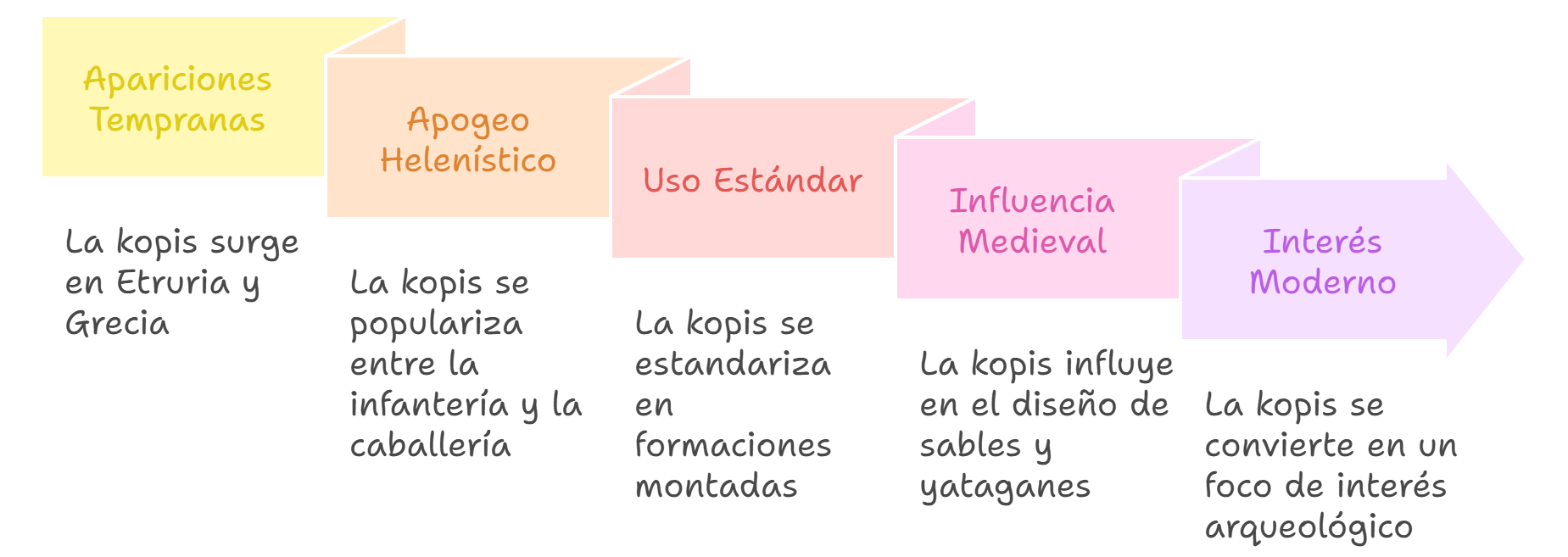
Kopis: shape, proportions, and cutting mechanics
The kopis is not just any sword: its recurved blade shifts the center of gravity towards the tip, transforming each swing into a blow with the blunt force of an axe and the length of a sword. This recurved design gives it a highly specialized cutting geometry.
Typical dimensions: early examples reached up to 65 cm, comparable to the spatha; later Macedonian variants reduced to about 48 cm for greater maneuverability in the cavalry. The exact length varied depending on the function: mounted or on foot.
Blade section: active edge on one side, proximal part with concave curvature, and distal section that becomes convex towards the tip, concentrating mass and energy when closing the blow. Some copies show a slight double edge in the last third to allow limited thrusts.
The hilt as an extension of the hand
The hilt of the kopis usually curves downwards. It was not just aesthetic: the curvature stabilized the grip, prevented the blade from overturning after a cut, and allowed superior control in dragging attacks. In remains and replicas, it often appears ornamented with animal motifs — horses, eagles — that both decorated and improved ergonomics.
Tactical use: why the kopis excelled in cavalry
In mounted combat, physics favors the blade that strikes forward and downward with more mass at the tip. The kopis took advantage of the inertia of the charge: the speed of the horse multiplied the effect of the concentrated mass in the curvature. Xenophon and other ancient authors highlight the suitability of striking with a curved blade from an elevated position.
The kopis offered clear advantages: cuts capable of damaging equipment and shields, blows that bypassed defensive barriers, and ease of getting rid of light protections. Against a closed phalanx, the kopis was useful in breakthrough actions or looser combats where the slash had a greater impact.
Technical comparison: Kopis, Falcata, and Xiphos
To understand its uniqueness, it is convenient to compare it with other contemporary swords. Below is a comparative table that includes dimensions, uses, and tactical advantages.
| Characteristic | Kopis | Falcata | Xiphos |
|---|---|---|---|
| Blade type | Single-edged, recurved forward | Single-edged, accentuated curve, shorter | Double-edged, straight and short |
| Typical length | 48–65 cm (variant by era) | 40–55 cm (generally shorter) | 45–60 cm (though double-edged) |
| Tactical use | Blunt cuts and mounted charge | Localized cut and thrust in confined space | Stabbing in formation, versatile |
| Main advantage | Inertia at the tip for powerful chop | Concentration of cut at a short point | Balance between thrust and chop |
A visual journey: replicas and surviving pieces
Throughout the text, you will see historical images and replicas that exemplify the form and bearing of the kopis. These modern pieces allow appreciation of details of the curvature, tang, and hilt that archaeological fragments sometimes do not fully preserve.
The image above shows a stylized interpretation of the falcata/kopis with a decorative handle. Observe how the curvature accentuates the mass at the tip, a fundamental design principle.
In this example, the concave-convex transition of the blade and a hilt designed for control in the stroke are clearly appreciated. Modern replicas retain these features because they are functional, not merely aesthetic.
Forging and techniques: from ancient iron to modern steel
Forging a kopis is not a mere formality; it is a ritual that demands discipline. In antiquity, forging techniques were used and, occasionally, surface hardening to toughen the outer layer of the blade. Today, artisans combine traditional methods with modern alloys and heat treatments to achieve a resistant and durable blade.
The hilt, which in ancient times could be made of bronze or covered wood, is in many current reproductions made with contemporary materials but respecting the original curve. Ornamental details are reproduced in bronze or alloys worked in sand molds, recovering the aesthetic of the past.
Ancient materials and processes explained
In antiquity, iron was worked with, and when possible, primitive steels achieved through carburization processes. Surface hardening (case hardening) added carbon to the surface to obtain a hard edge and a more ductile core. These principles continue to inspire current blacksmiths, although with more precise thermal controls and steels of known composition.
Historical hilts were anchored to the tang with rivets and, occasionally, with adaptations that are reproduced today for safety and aesthetic reasons. Contemporary artisans replicate models with attention to ergonomics and functionality tests.
The Kopis in iconography and material culture
Painted vases, reliefs, and funerary steles preserve images of warriors with curved blades. These representations confirm its use not only as a combat tool but also as a symbol of status and martial skill. Scenes of cavalry charges and singular combats immortalize it in collective memory.
Its presence in funerary artifacts suggests that in some contexts the kopis had a symbolic value, perhaps associated with military craft, hunting, or sacrificial rituals.
Influence and lineage: the long shadow of the Kopis
The kopis did not die with antiquity. Its formal solutions inaugurated a line of designs with a heavy tip and active edge: the Iberian falcata, the Egyptian khopesh that may have inspired it, the Ottoman yatagan, and later, the European falchion and certain sabers. The recurrence of the recurved geometry proves a constant practice: when function demands a forceful cut, the form returns to similar places.
Cultural exchange in the Mediterranean spread these ideas. Blacksmiths adopted and adapted, showing how a good design concept transcends borders and centuries.
Maintenance and conservation of replicas
If you own a replica, conservation is essential. Regular cleaning, protection from moisture, and storage in a dry environment extend the life of the blade. A light oil on the steel and periodic reviews of the hilt guarantee integrity and safety.
Avoid aggressive cleaning with abrasive materials that could damage the temper or aesthetics. If the replica has bronze elements, protect them with specific products so as not to alter their patina.
Kopis and falcata: close relatives?
The comparison between kopis and falcata is inevitable. Both share the forward curvature, but differ in proportions and use. The falcata, of Iberian origin, tends to be more compact and focused on a localized strike; the kopis is, generally speaking, longer and designed for mounted charge where inertia is decisive.
Archaeological findings and typological analysis suggest reciprocal influences rather than a direct lineage. Fundamentally, both respond to the same need: to maximize cutting power from a mobile platform or in spaces where defense was unprotected.
Comparative table: specifications and use
The following table summarizes the difference in specific elements to facilitate conceptual choice between copies and replicas.
| Element | Kopis | Falcata | Xiphos |
|---|---|---|---|
| Blade material (replicas) | Carbon steel or tempered stainless steel | Carbon steel with pronounced curvature | Steel with double edge and balanced temper |
| Hilt | Curved downwards, often decorated | Ergonomical and compact | Straight or slightly curved, protective |
| Purpose | Cutting in charge and open combat | Close combat, short and forceful blows | Closed formations and stabbing |
Kopis: replicas and notable pieces
To hear the artisan who forges a kopis today is to follow a thread that begins with the ancient smiths. Each replica tries to balance authenticity, safety, and functionality. There are variations designed for collectors, others for dynamic tests, and some created specifically for historical reenactment.
The previous piece shows an elegant and robust replica that recalls the Iberian and Greek line. Details such as the hilt rivet or the blade profile mark the difference between a decorative piece and a functional one.
Observe how the curve adapts to an impact ergonomics. Current artisans respect this measure to recreate historical sensations in cutting tests and exhibitions.
Tips for understanding a replica vs. an archaeological piece
Archaeological pieces are usually incomplete or corroded; replicas, in contrast, are presented complete and functional. When comparing, pay attention to the blade profile, the cross-section, and the hilt-blade joint. These clues will tell you if a piece is intended for exhibition or for dynamic use.
Likewise, archaeological documentation — typologies, funerary contexts, and findings — helps to identify regional and chronological variants, so a well-documented replica is a bridge between the past and modern practice.
Lasting final words
The kopis is a clear example of how function molds form to create a utilitarian masterpiece. It is not just a curved sword; it is the answer to very specific tactical needs, a symbol of ancient cavalry, and an influence on generations of blacksmiths. Its silhouette continues to inspire artisans and enthusiasts because it contains a simple truth: the best form is the one that fulfills its purpose with elegance.
Today you can appreciate its figure in museums, in the hands of reenactors, or in the workshop of a blacksmith who respects the secrets of steel. Whatever your interest — historical, technical, or aesthetic — the kopis offers a window into the martial and creative mentality of antiquity.
VIEW KOPIS AND MORE GREEK SWORDS | VIEW FALCATAS | VIEW ALL TYPES OF SWORDS
